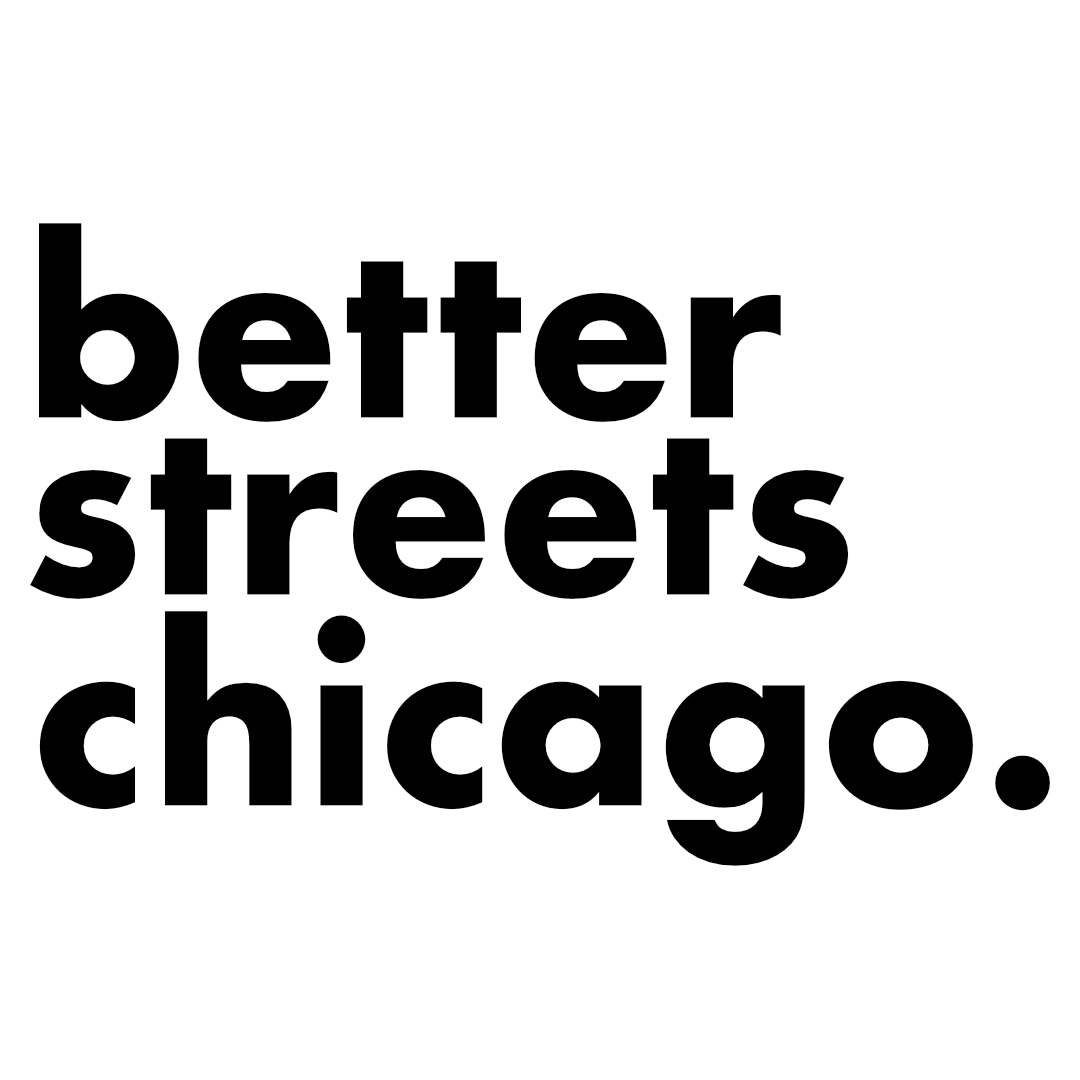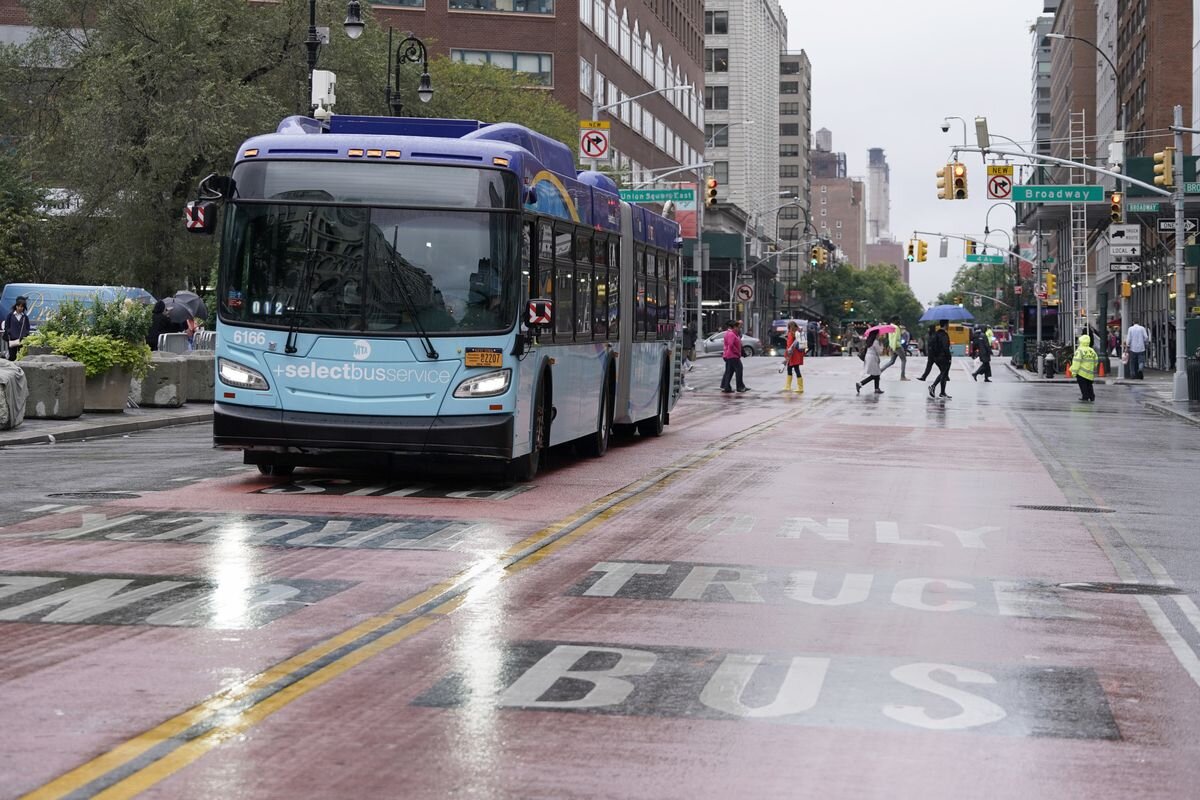COVID-19 and Transportation: The Path We Could Have Taken
We are now in month 7 of the coronavirus pandemic. These are not easy times. People are concerned about their health on multiple levels-physical, emotional, and financial. In the backdrop of the pandemic is environmental breakdown. In many ways coronavirus is a symptom of climate change, one of the greatest challenges humanity is facing.
We are now in month 7 of the coronavirus pandemic. These are not easy times. People are concerned about their health on multiple levels-physical, emotional, and financial. In the backdrop of the pandemic is environmental breakdown. In many ways coronavirus is a symptom of climate change, one of the greatest challenges humanity is facing.
New York City’s robust 14th St Busway, an example of something that’s easy, quick, and cheap to implement.
Some countries and cities have responded to coronavirus by creating and expanding places for people to practice social distancing- space for open air dining, expanding sidewalks so people have space to safely walk and run, and slowing or eliminating car traffic in order to create safe spaces for walking and biking. New York City and Washington, D.C. decided to increase the amount of bus-only lanes in order to speed up bus service and reduce the amount of time travellers spend on the bus. Chicago has slightly expanded our bus-only lanes by 50% but that’s not all that impressive when you look at the data. Before recently creating temporary “pop-up” bus-only lanes, Chicago had less than 4 miles of bus-only lanes. As a result of so-called expansion, we now have a little under 8 miles of bus-only lanes. While I appreciate some effort to try to reduce travel times on our busiest bus lines, a recent field trip to check out the temporary bus-only lanes on 79th street was quite disappointing. New York City created a network of slow streets. Chicago has created slow streets as well but there is no city-coordinated effort, instead individuals alders must champion bringing one to their wards. If we had a well-funded department of transportation we would have a city-wide network
As the Assistant Editor for Streetsblog Chicago and someone overall passionate about sustainable transportation and creating more environmentally friendly, equitable, and fun cities, I have kept up with investments other cities and countries have made in walking, biking, and creating more spaces for people during the coronavirus pandemic. Compared to our peer cities, our “investments” to enhance mobility during COVID-19 has been disappointing, to say the least.
I don’t know about you but I’ve noticed a big increase in the amount of people biking on our streets. Many Chicagoans have hesitations about riding buses and trains and have taken to biking as an affordable and coronavirus safe way to get around. Some have turned to biking as a way to stave off boredom and spend quality time with friends and/or family. I crossed paths with a woman riding an E-Divvy at a stop light. She told me she had taken up biking during the pandemic and was overall enjoying it aside from daily close calls with drivers. Our co-founder Kyle Lucas works with many people who live on the South Side who commute to downtown Chicago. He has shared numerous instances of his co-workers having difficulties with transit during the pandemic: buses being full and passing them up causing them to wait even longer for a bus, commutes taking 1-2 hours longer than pre-COVID. We know these are not isolated events. Every day people biking experience preventable close calls and every day our buses are unnecessarily moving at slow speeds.
Here are a few inspiring examples from other cities that have charted a different transportation path during the Coronavirus pandemic:
London's Low Traffic Neighborhoods: Exactly as it sounds, traffic is diverted to streets more appropriate for medium to heavy car traffic which allows residents to walk, run, bike, scoot, and roll on neighborhood streets without fear of being injured or killed by a driver. Wouldn’t it be nice if more children in Chicago were given the opportunity to play on the streets without their parents fearing they will be injured? Wouldn’t it be nice if you could walk, bike, rollerskate, skateboard, scoot, etc on your neighborhood streets without fear an angry driver will ruin your experience? It’s totally possible!
Montreal expanded sidewalks in business districts, near schools and daycare centers, and in areas with high pedestrian traffic. Along with expanding sidewalks, Montreal created a small network of slow streets that prohibited car traffic and allowed for people to walk, scoot, skateboard, and bike in the roadway. 98 miles of safety corridors were created in a month.
Bogota created 84 kilometers of emergency bike lanes to assist essential workers get around. The lanes were also created to reduce traffic.
Mexico City has created 54 kilometer (33 miles) of bike lanes to facilitate socially distant and sustainable transportation.
Paris has created 650 km (403 miles) of emergency cycleways to aid Parisians with socially distant and sustainable forms of transportation. In addition to creating more cycleways, Paris is aiming towards becoming a 15 Minute City, a city in which all of your daily needs are accessible within a 15 minute walk or bike ride. Lastly, Paris will be repurposing thousands of on-street car storage spaces into productive uses of land. Residents will be consulted on how they want to repurpose the space. Wouldn’t you love it if the space on your block could be used for something better than storing an empty car for 24 hours of the day? That same space could hold secure parking for multiple bikes and scooters, a composting bin, a bench, a trampoline, a garden, etc. We’ll need your help to make the case to our elected officials that we want to use our streets for more productive purposes.
Chicago faces many challenges as a result of COVID. We realize city funds are limited at this time but we shouldn’t allow that to get in the way of improving public transportation and creating safe cycling infrastructure. Many individuals and families are experiencing financial hardship and quality affordable transportation, whether it be transit or biking, is a part of relieving financial hardship. Sure plenty of Chicagoans own cars but who's to say they wouldn’t ditch their car for the bus or a bike if we made those options more attractive?
We want to hear from you! In what ways would you want to see Chicago improve the sustainable transportation landscape?




